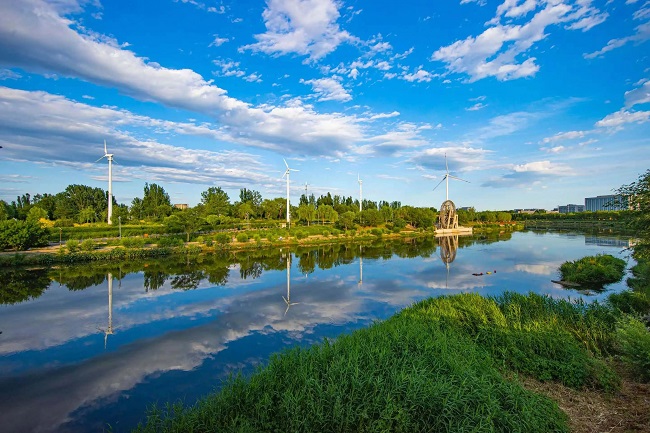Beijing E-Town achieves the city's best reduction in PM2.5 levels

A picture of the beautiful scenery in Beijing Economic-Technological Development Area
Beijing Economic-Technological Development Area (Beijing E-Town) had an annual cumulative PM2.5 concentration of 32.6 micrograms per cubic meter in 2024, a year-on-year decrease of 13.8 percent and the highest reduction in Beijing, according to data released at the Beijing Municipal 2024 Air Quality Status Press Conference.
This marks a 25 percent decrease compared with the same period in 2019.
According to the analysis of PM2.5 sources, Beijing E-Town has identified promoting the use of electric motor vehicles as an important measure for achieving environmental, economic and social benefits, as well as a crucial measure for emission reductions in the future.
In 2024, Beijing E-Town took the lead in designating ultra-low emission zones, demonstrating the construction of two zero-emission vehicle fleets and increasing the proportion of new energy vehicles used by enterprises in the area from 70 percent in 2023 to 82 percent today.
At the same time, the area was the first in the city to introduce financial incentives for enterprises to replace their vehicles and leased shuttle buses with new energy vehicles.
In addition to promoting that enterprises meet emission standards, Beijing E-Town has fully leveraged the innovative vitality of industries, empowering the building of an ecological society through digitalization, informatization and intelligent means. It operates the country's first group of mobile intelligent monitoring unmanned vehicles, complementing satellite remote sensing monitoring and patrol monitoring, running around the clock to monitor PM2.5 and eight other gaseous pollutants in real-time. By relying on the use of urban operational big data, it has enhanced the level of scientific and precise pollution control.
In 2025, Beijing E-Town will continue to prioritize air pollution control as a crucial aspect of leading breakthroughs in ecological environmental protection. It will persist in precise and scientific pollution control, coordinating efforts to reduce carbon emissions and pollution.


